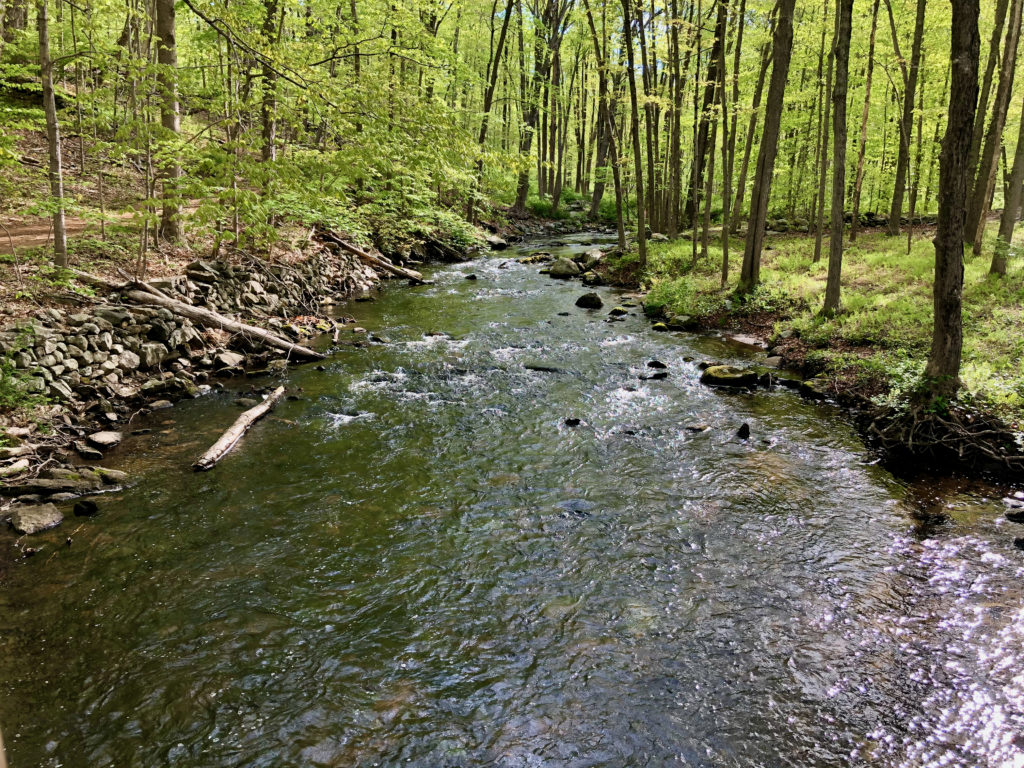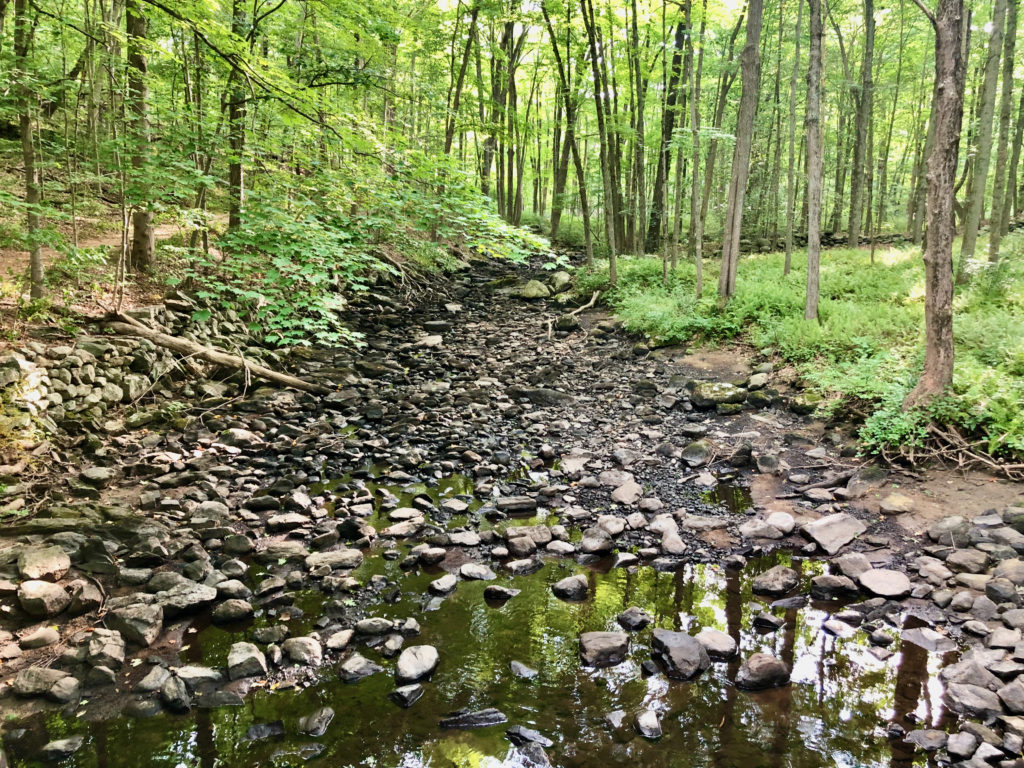Welcome to August 🙂 The lake is always some shade of green in (late) August.
This is due to several things:
- Lack of water turnover. It hasn’t rained in a while, at least not a significant amount that wasn’t immediately absorbed by the dry ground. (this is common in August and early September)
- The water is warmer because of the warmer temperatures. (August)
- These factors combined contribute to additional algae in the lake.
The lake will (eventually) cool down, the rains will (hopefully) return, and the lake will turn less green in a week, or two, or three. It depends on the weather.


Most of the time our algae is the green algae type. Occasionally the algae type we see can be blue-green algae (cyanobacteria) which can overwhelm a water body temporarily after an extended heat wave. We last had a potential harmful algae bloom (HAB) in 2013 (see article here). Please let us know (Contact us) if you suspect a bloom of this type on the lake. We have testing companies that can examine samples to determine what is present. We have not had these weather conditions this year and most likely will not as the end of the summer is approaching.
Some other things to keep in mind, in no particular order:
- We manage our lake, we don’t have an on/off switch for the conditions.
- Truesdale is a lake, which has natural living things in it. We need to maintain a balance. This is for the health of the lake and the other animals and plants we share it with.Â
- The lake’s “filter” is the land around it. Pavement, lawn, and fertilizer are not good for this filtering system. The more pavement there is, the faster water travels into the lake. The faster the water travels, the more nutrients it brings in. More nutrients = more plant and algae growth.
- Fertilizer on lawns near the lake or in the lake watershed go directly to fertilizing the weeds and algae. Don’t use fertilizer on your lawn. The best lakeside lawns are the smallest ones. Lawns are monocultures that don’t help the local ecosystem and attract geese to the lake (another source of unwanted nutrients). Please read this article about native vegetative buffers and why they are essential for lake health: https://truesdalelake.com/2016/03/article-link-plants-to-use-and-avoid-when-planting-a-vegetative-buffer/
- The lake will never be a swimming pool. I think many understand this after having lived here for years, but occasionally new residents move in who are unfamiliar with the annual cycle. They may have expectations of water clarity and plant-free water that are neither realistic nor healthy.
- Truesdale is a shallow lake. (deepest part overall is 16 feet, with the south end near the TEA beach having a deepest point around 8-10 feet). That means the sun is always able to reach the bottom of the lake. This means the entire 83 acres is fertile ground for plant growth. Plant (and algae) growth is going to happen. We can only affect it a certain amount.
- Herbicides and Algaecides are not perfect by any stretch. They are effective in the short term, but they dissipate and dilute by their nature. However, they are the most cost-effective solution we have for managing lake appearance and conditions.
- Solutions other than herbicide treatment can be very expensive (dredging, mechanical harvesting) and would require a steady source of tax-based revenue and a tax district to do on a lake-wide scale. Some smaller scale (i.e beach area, or several household lakefront) efforts that have been undertaken to address specific areas at specific times. These projects funded financially by individual homeowners or groups of homeowners, not lake-wide.
- Other weed control alternatives like grass carp are essentially undirected biological weapons that give no guarantee that the carp will eat 1.) where your want them eat to and 2.) what you want them to eat. They are also invasive species and must be sterilized before introducing them or they will overwhelm the ecosystem.
- Even under reproductive control, non-native grass carp can end up decimating the native plant life and allowing invasive plants to gain even more of a foothold if they prefer the taste of the native plants more than the invasives. These fish can also root around the bottom of our lake, stirring up muck and introducing previously buried nutrients back into the water column. This may actually end up causing more problems with water clarity and weed spread and growth. They also cannot be fished out (removed) if they become a nuisance.
- Everything we do is a trade-off between time, money, and effectiveness. In addition to keeping a balance of nature, we are trying to balance the checkbook.
The bottom line is any solutions we employ are management, not control. We have a limited number of levers to move to affect weeds and algae, and we (and the professionals we hire) do their best in the environment we have.
New ideas and undertakings are always welcome — we are all in this together. If you are looking to do wetland buffer zone work, waterfront work, or lake floor work, a wetlands permit is needed from the town. Please visit their website for more information. Please consult them *before* starting anything since fines can be steep for work done without proper permits.
